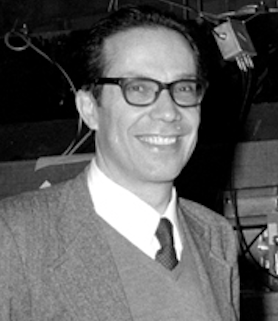
Guido Petrucci, one of the engineers who contributed to CERN’s reputation as a centre of technological excellence, passed away on 9 July after a long illness.
Born in Trieste on 27 September 1926, Guido obtained a degree in electrotechnical engineering from the University of Rome in 1951. In 1954, he was recruited to work at CERN by Edoardo Amaldi. He first joined the PS Magnet group, and then a physics group involved in cosmic ray experiments at the Jungfraujoch (there were no accelerators yet in operation at CERN in those early years). In this environment, he developed a keen interest in physics that shaped his career for the years to come. He became one of the leading engineers in the CERN physics research divisions and always worked in close contact with physicists (for this reason, he liked to define himself as an "atypical engineer").
After designing the magnet for the two-metre hydrogen bubble chamber, he soon became an expert in beam optics and designed a large number of beam lines for the CERN South and East zones. For some of these, he designed special magnetic elements, such as a magnet with two septa, used to split the proton beam slowly ejected to the East Area into three branches.
In the second half of the 1960s, Guido designed the storage ring for the third muon g – 2 CERN experiment. At the end of the experiment in 1976, under Guido’s leadership, this ring was transformed into a strong-focusing synchrotron for the Initial Cooling Experiment (ICE). ICE demonstrated that stochastic cooling, and later electron cooling, work well. This was a crucial step towards the operation of the SPS as a proton–antiproton collider in the 1980s. He then went on to design the magnet for the UA1 experiment and, in the 1980s, the magnetic structures of the ALEPH and DELPHI solenoidal spectrometers at LEP.
Guido retired from CERN in 1991, but continued to work on various projects, such as TERA, the ELETTRA 2.4 GeV electron synchrotron in Trieste, the KLOE experiment at the electron–positron collider DAΦNE in Frascati, and the PVLAS experiment at the Legnaro INFN laboratory.
Guido was an exceptionally bright engineer, always able to find simple and elegant solutions to difficult technical problems, and always willing to provide advice to his colleagues. He was also very cultured, with an interest in all aspects of the arts, such as music (he had a piano diploma from the Rome Conservatory), architecture and painting. A discussion with him was always an enriching experience. Guido will be sorely missed by all those who had the privilege of being among his collaborators and friends.
His colleagues and friends
